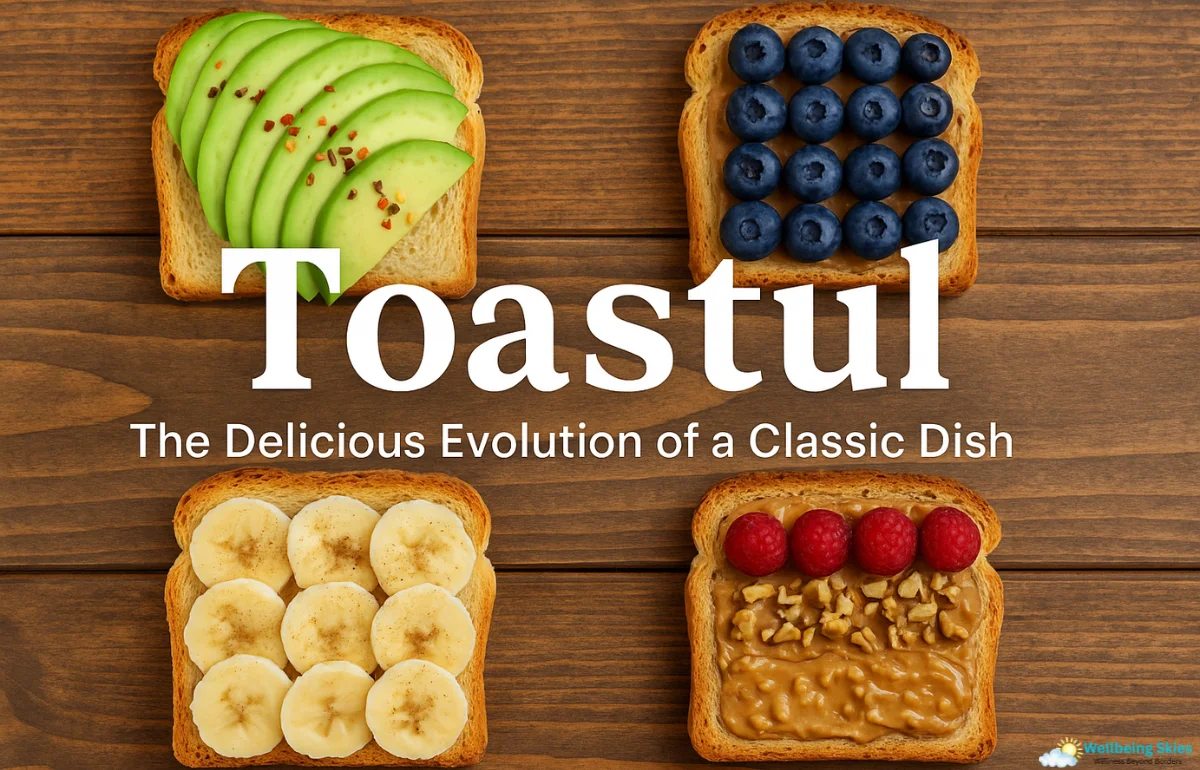From Ancient Fires to Modern Plates
Toastul isn’t just about a slice of bread—it’s about a story that spans thousands of years, connecting ancient traditions to modern creativity. The concept of Toastul began long before electric toasters and fancy toppings. Ancient Egyptians were among the first to brown bread over fire, discovering that heat not only enhanced flavor but also made bread last longer. From there, the Romans embraced this practice, serving toasted bread at feasts and even carrying dried slices on long journeys.
By the Middle Ages, toast had become a staple across Europe. It was used as a base for spices, meats, and early versions of toppings. But the real transformation came in the late 19th century with the invention of the electric toaster—a small appliance that sparked a revolution in breakfast culture. Suddenly, everyone could create that golden crunch at home, paving the way for the diverse and delightful world of Toastul we know today.
How Toastul Became a Trend
Fast-forward to the 21st century, and Toastul evolved from a breakfast necessity into a culinary art form. Social media platforms—especially Instagram—turned this simple dish into a visual phenomenon. People began experimenting with textures, spreads, and colors, transforming toast into something that was both edible and aesthetic.
Influencers and food bloggers showcased their creations, from avocado toast masterpieces to decadent chocolate and fruit combinations. Cafes caught on quickly, introducing dedicated “toast menus” that blended artistry with nutrition. What was once a humble household staple became a global food trend—proof that simplicity, when combined with creativity, can capture the world’s attention.
The Many Faces of Toastul
The magic of Toastul lies in its versatility. No matter your taste or diet, there’s a toast variation for everyone.
Sourdough Toast
Sourdough is the classic choice for many enthusiasts. Its tangy, fermented flavor pairs beautifully with creamy spreads, savory toppings, or even a simple pat of butter. Each crunchy bite feels rustic yet refined.
Whole Grain Toast
Packed with fiber and nutrients, whole-grain toast offers a hearty base that satisfies hunger and promotes wellness. It’s a go-to option for health-conscious eaters looking for both flavor and function.
Rye and Gluten-Free Toast
Rye toast, popular in Northern Europe, provides a dense, earthy flavor often complemented by smoked salmon or eggs. For those avoiding gluten, almond flour or chickpea-based toast delivers that same satisfying crunch without compromise.
Sweet Variations
Toastul isn’t limited to savory palettes. Sweet lovers can indulge in French toast, brioche with honey, or whole-grain slices topped with almond butter and bananas. The combinations never end, making every treat absolutely delightful.
Creative Toastul Recipes to Try
Toastul’s charm lies in experimentation. Here are a few ways to reimagine your morning (or evening) slice:
-
Avocado Feta Delight: Spread mashed avocado on whole-grain toast, crumble feta cheese, and add pomegranate seeds. The balance of creaminess and tang is divine.
-
Sweet Nut Butter Bliss: Layer almond butter on multigrain bread, top with banana slices, and finish with dark chocolate shavings. It’s indulgent yet healthy.
-
Savory Hummus Crunch: Spread hummus over rye toast and add roasted red peppers with a sprinkle of herbs. A light, protein-rich snack that feels gourmet.
-
Ricotta Dream: Spread ricotta cheese on toasted brioche, drizzle honey, and top with pistachios for a dessert-style treat that’s as elegant as it is easy.
These recipes embody what Toastul represents: creativity, simplicity, and joy in every bite.
The Health Benefits Behind Toastul
Beyond taste and aesthetics, Toastul has surprising health benefits—especially when made with nutritious ingredients. Whole-grain varieties are rich in dietary fiber, which aids digestion and promotes a healthy gut. The complex carbohydrates in bread provide steady energy, making toast an ideal breakfast or midday snack.
Toppings like avocado, nut butter, or ricotta bring healthy fats and protein into the mix. Together, they support heart health, muscle recovery, and sustained fullness. Additionally, many breads contain essential nutrients such as iron, magnesium, and B vitamins—vital for overall well-being.
Even gluten-free versions contribute to balanced diets, especially for those with sensitivities. With smart choices, Toastul becomes more than comfort food—it’s a nutritional powerhouse disguised as a treat.
Crafting the Perfect Slice
Perfecting Toastul is about more than popping bread into a toaster. Start with quality bread—sourdough, rye, or whole grain tends to deliver the best results. Use consistent heat for even browning, whether through a toaster or oven.
As soon as it pops, spread butter or oil to let it melt perfectly into the surface. Timing is everything: too long, and it burns; too short, and it stays limp. The sweet spot gives you that crisp edge with a soft center.
Experiment with seasoning too—sea salt, olive oil, or even garlic powder can elevate the simplest toast. The secret to mastering Toastul is treating it as an art form rather than a routine.
Conclusion: Why Toastul Deserves a Place at Every Table
Toastul is proof that the simplest foods can spark endless creativity. From ancient civilizations to Instagram feeds, it’s evolved into both a comfort food and a culinary statement. Whether you prefer it savory or sweet, minimalist or artistic, toast’s universal appeal lies in its versatility.
Every slice of Toastul tells a story—of flavor, history, and imagination. So next time you prepare a piece, think beyond breakfast. Try a new topping, share your creation, or simply enjoy that satisfying crunch.
Because in the end, Toastul isn’t just toast—it’s a celebration of taste, texture, and timeless simplicity that continues to unite food lovers around the world.
I’m Salman Khayam, founder and editor of this blog, with 10 years of experience in Travel, Lifestyle, and Culture. I share expert tips on Destinations, Hotels, Food, Fashion, Health, and more to help you explore and elevate your lifestyle.

